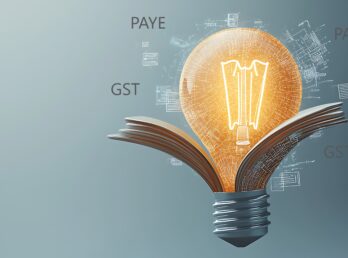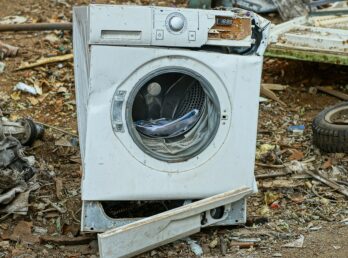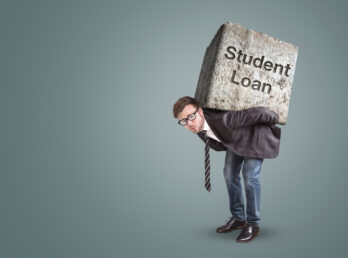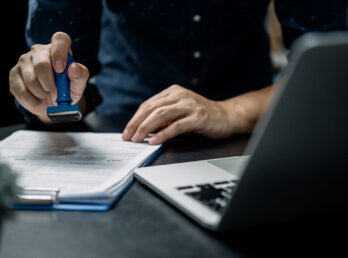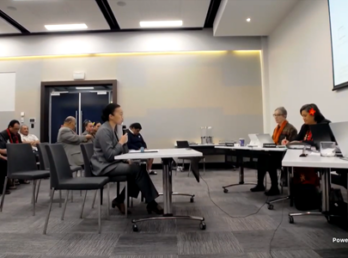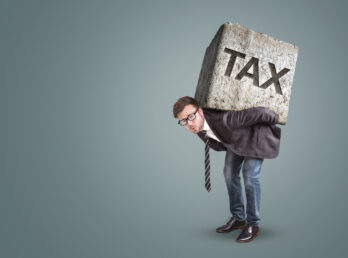Everyone is Talking ‘Digital Assets’. What Do They Mean and Why Should I Care? articles
Date
29 Sep 2025
Related Expertise
What Is Going On?
We have heard of Bitcoin, NFT’s and many other descriptions and acronyms under the general description of ‘crypto’. These are electronic creations which do not concern many of us because they are not perceived to involve ‘real world assets’ (RWA). However, RWA are moving more and more to the digital world.
“In line with the world’s transition towards digitalisation, the securitisation process of ownership of assets is evolving as well. Instead of a “physical” document, certain conditions under certain circumstances are digitally represented by a digital token.” 1
[Because “crypto” is so associated with cryptocurrency, we prefer to use the broader term “Digital Assets” which covers all electronic/digital representations of RWA ‘s or digital value. For an explanation of other terms used in this article such as “token” [see the Digital Assets Primer below]
According to research by Swyftx and others, more than 700,000 New Zealanders [15%] were engaging with cryptocurrencies. More than double that [30%] were interested in getting into the asset class in the next 12 to 24 months, Titman said 2
But it is not just cryptocurrency investment (cryptocurrency being only one form of Digital Assets) driving Digital Asset activity. Recent research by Protocol Theory, in partnership with Easy Crypto, reveals a significant shift in how New Zealanders view financial investment, with nearly half of Kiwis now seeing cryptocurrency as a viable alternative to traditional home ownership for building financial freedom.3
Worldwide, the move to Digital Assets is gaining pace. According to the CFA Institute Research and Policy Center’s 4 latest report on tokenisation, applying distributed ledger technology in finance and tokenising assets could simplify, automate and streamline operational chain efficiency, as well as result in cost and time savings, “particularly where a system of intermediaries and manual processing is currently required“. The CFA also argued that tokenisation could broaden private markets access through higher levels of operational efficiencies and lower minimum investment requirements.
In the US, there has been a substantial wind change in favour of the digital economy with the passing of the Genius Act in August 2025 giving certainty and stability to Stablecoins [see Section 8 the Digital Assets Primer below] and the United States Securities and Exchange Commission (SEC) Chair recently saying he would establish “clear rules” for the issuance, custody, and trading of Digital Assets.
What’s Wrong With What We Have?
Despite this activity, many may prefer to stick with the ‘real world’, where we can touch and hold physical assets, even if they are just pieces of paper representing a share in a company or a statement of money in a bank and issued by some centralised record keeping and transaction-enabling system such as a bank, listed company or stock exchange.
But those ‘real world assets’ (RWA) have their downsides: they can be forged, mistakes made in their records, or the history surrounding the RWA can be incomplete or missing, making due diligence before acquiring the RWA difficult if not impossible to obtain a true picture.
RWA can be hard to transact sales or other changes where:
- there is general reliance on third parties to take your instructions and carry out the transaction: a party may be at lunch or on holiday or make a mistake in effecting your instructions;
- an exchange or central agency or register may be closed outside limited working hours;
- these third parties and agencies require payment for time and effort and resources used e.g. staff, premises, IT etc;
- there can be significant time delays between the time the instruction is given for the transaction and the final funds flow to the recipient.
These limitations also apply to the sale of goods and services, where the verification of the supply and eventual payment to the seller can be slow and costly, particularly if one of the parties is overseas.

Why is There a Change?
Wouldn’t it be better if ‘something’ that reflects a RWA could also:
- be impossible to change by forgery. After completing a transaction on the blockchain, it can no longer be changed and can be verified through the network. Thus, the completed transaction can neither be manipulated nor cancelled;
- hold a complete record of every transaction and every relevant document from the beginning of its existence to the time you want to carry out due diligence on it before purchase;
- be able to be sold or transacted 24 / 7 / 365 anywhere in the world (giving greater liquidity) without the need and cost of lumbering third parties. If a Digital Exchange is needed, the transaction cost is a fraction of the Real-world cost because there are nowhere near the same real-world overheads.
- through the use of electronic “smart contracts”, numerous intermediate steps, such as compliance, document verification, trading, intermediate payments and commission deductions (much cheaper because less resource intensive) can be carried out automatically with the final funds flow to the recipient almost instantaneously after the initial funds are received.
The ‘something’ can be achieved by the ‘tokenisation’ of RWA. [Stace Hammond is involved with cutting-edge RWA tokenisation programmes including a unique method of tokenisation of real estate. These aspects however are not covered by this introductory paper]
How does this affect me?
Personal
You or someone in your family or close to you may own Digital Assets.
- How are those Digital Assets going to be identified and passed on under your or their Will? [see Security issues under the Digital Assets Primer below]
- If you are appointed Executor of a Will, how are you going to identify the Digital Assets so that the wishes of the deceased can be properly carried out? For estates involving digital assets, final tax returns need to be carefully handled without assumptions being made in relation to distributions or previous transactions of Digital Assets being on capital account.
- Do you realise that simply holding cryptocurrency may create a tax problem? Can you show value of cryptocurrency holdings at every transaction stage from acquisition, staking to disposal?
- Should Digital Assets be part of your investment portfolio
- Do you make payments to family overseas which might be more easily and cheaply made via Stablecoin ? [see Security issues under the Digital Assets Primer below]
- Are you party to a relationship property arrangement that involves, or could involve, Digital Assets, whether a prenuptial agreement or relationship property agreement on breakup? Although transfers pursuant to such settlements are likely to be without tax implications, the receiving party needs to be aware of the potential for income revenue liability on receiving those assets. At the very least a value will be required for subsequent revenue calculations for tax returns.
Business
Are you getting maximum value for your business by an awareness of and using Digital Assets?
- Could a crypto offering raise capital or form part of your company’s balance sheet?
- Do you offer payment of your invoices in cryptocurrency e.g. Stablecoin [see Section 7 of the Digital Assets Primer below]? In tough economic times, every opportunity to get your bills paid should be looked at, particularly with potential cost savings and speed of payment that digital payments offer.
- Are you looking at purchasing a business that has Digital Assets – how will you deal with them e.g. valuation and transfer?
- In insolvency situations has the debtor converted RWA Digital Assets with the intent to hide them and deal with them offshore.
Someone in a business facing insolvency can spirit away value into Digital Assets and hide and not disclose the Private Key [discussed under the Digital Assets Primer below]. Even if the creditors of the business know there are Digital Assets spirited away, without the Private Key the Digital Assets may not be able to be accessed and the person facing insolvency could probably be able to transact the Digital Assets to another jurisdiction or otherwise away from capture.
Conclusion
This paper can only touch on some of the matters that should be considered. We at Stace Hammond wish to ensure our clients are aware of the significant developments in relation to Digital Assets and encourage clients to consider and discuss with us how best to deal with Digital Assets in all their aspects.
For more information contact Patrick Wilson or Erin Littbarski or Here to Help – Stace Hammond
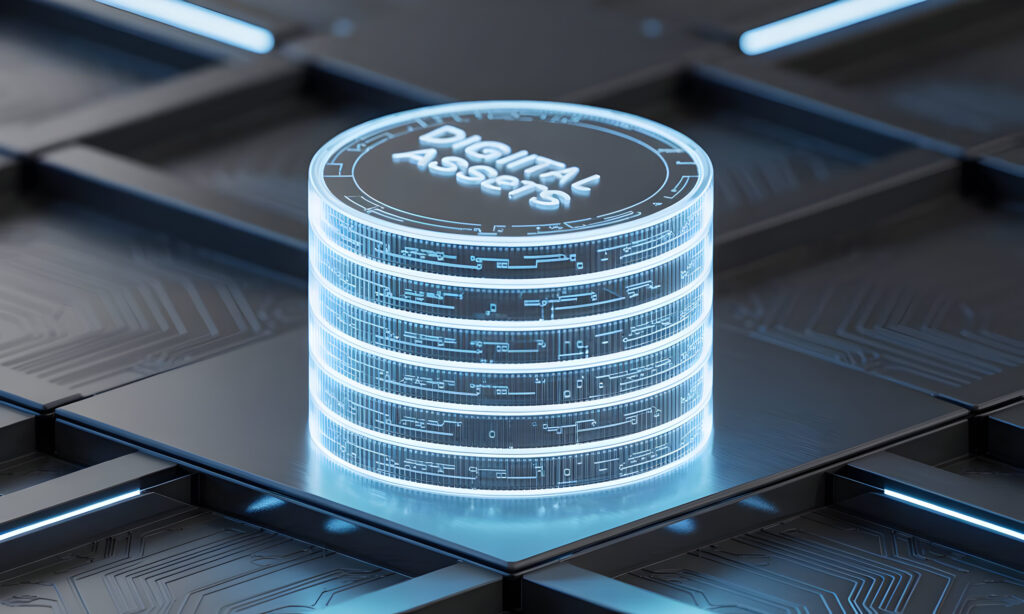
Digital Assets Primer
1 Digital-world Assets (inherently Non-physical) – Tokens
1.1 RWA can be represented in the digital world through Web 3 (a term for the next iteration of the internet that uses blockchain technology to decentralize data ownership and control. Web3 is built on the idea that users should have more control over their data, pricing, and the direction of projects).
- Web 2.0 is the current version of the web, while Web 3.0 represents its next phase,
- Web 3.0 is expected to be more decentralized, more open, and of greater utility, due in part to the use of artificial intelligence.
1.2 For the representation of Digital Assets, the RWA ‘piece of paper’ record is replaced by what is usually described as a Token. Tokens take various forms: Commodity Tokens, Security Tokens, Utility (or Application or User) Tokens and Payment Tokens to name a few.
1.3 Or a Token could represent a digital-world only asset such as a cryptocurrency like Bitcoin or NFT (Non-fungible Token). [“Non-fungible” refers to things that are not interchangeable with other items because they have unique properties such as land or specifically numbered shares in a listed company].
2 Blockchain
2.1 But how is your Token of bits and bites determinable as unique and separate from someone else claiming it? If a government or large corporation (or criminals) offered a Token, what control could you have over it being taken, lost, restricted or impaired?
2.2 The answer is Blockchain. Firstly, Blockchain is decentralised and so cannot be controlled by powerful forces. Decentralised systems such as Web 3.0 operate in pieces of the relevant data on tens of thousands of private computers over the world that cannot be controlled by any government or corporation because no one party controls the network. Rather, all users collectively retain control. In a decentralised blockchain network, no one has to know or trust anyone else. Each member in the network (or ‘node’) has a copy of the exact same data. If a member’s ledger is altered or corrupted in any way, it will be rejected by the majority of the members in the network.
2.3 The Blockchain needs to be unique for every new use. This means that the digital elements of the first component, the “Block”, must never have existed before. To produce the Block, the combined computing power of tens of thousands of private computers over the world (called “mining”) are used to crunch the math to produce the unique Block.
2.4 Then the Block is assigned its use/task eg to be a Bitcoin or NFT or Token or Smart Contract. Next the first owner of that Block and other identifier information is added as the first link in the ‘chain’. When the Blockchain is modified, transferred or otherwise dealt with further links/blocks are added to the chain – hence ‘block chain’.
2.5 Each transaction is verified by a ‘consensus network’ of computers i.e. a peer-to-peer digital network that records and maintains all transactions on each blockchain. It works effectively like triple entry accounting, with the computers in the network verifying that the ledger is correct. As new data comes in, it is entered into a fresh block which is then linked to the previous block, which makes the data chained together in chronological order because each transaction which forms part of a block is timestamped. As each timestamped transaction is visible via a ‘block explorer’ and the network constantly verifies the ledger of transactions, network participants can be confident that the blockchain represents an accurate record (right from the very first transaction).
2.6 All links in the chain are visible for anyone to see its provenance but no-one can hack the Blockchain and the holder of its key can only add to it by further transactions but not amend earlier links ie the Blockchain is immutable. This is an advantage over Real-world assets, records for which can be forged or fraudulently altered and is one of the reasons why using Blockchain for international trade (particularly if linked with a smart contract) is so much preferable.
3 Dealing With Digital Assets
3.1 Crypto assets can be purchased through various platforms. Firstly, a user needs to convert NZ$, or appropriate fiat currency (meaning government issued currency such as dollars), to acquire their chosen Digital Asset whether cryptocurrency or otherwise. This can be done through specialised currency-to-crypto exchanges or Virtual Asset Service Providers (VASPs), like Easy Crypto, MEXC or Swyftx.
3.2 From the exchange, the crypto can then be transferred to a digital ‘wallet’ for retention or transacting: see 5 below.
3.3 When you first buy a Token such as cryptocurrency, you are issued two keys: a Public Key, also referred to as a ‘public address’, which allows someone to receive crypto transactions and works like an email address or your bank account number (meaning you can safely share it with others, allowing you to send or receive funds), and is a cryptographic code that is paired to a ‘rivate Key’.
4 Private key/seed
4.1 Private Key. When you make a transaction using your Public Key, you verify that it’s really you by using your Private Key to ‘unlock’ the wallet to transfer the crypto. The private key is a bit like your internet banking password or the front door key to your house. If a user loses the private key to their wallet, e.g. through mismanagement or a cyberhacker, the user usually loses access to their wallet and the assets within. Unlike a bank though, if you lose your private key, users are unable to request a new one. The assets remain on the blockchain, but the user cannot access them.
4.2 Although sometimes numbers are included, this is typically a sequence of a 12 word Master Seed phrase (randomly generated from a limited defined set of 2048 words which are not complicated eg “dog”, “bike”, “cabbage”) but must be inputted in the correct order (the permutations of an exact sequence of 12 are extremely high).
5 Digital Wallets
5.1 Digital Wallets operate a bit like bank accounts: receiving, storing, or transferring a user’s Digital Assets. Most of us have Digital Wallets in some form (eg Apple Pay, Google Pay, bank debit apps) but these do not need a Private Key. For transacting digital assets, such as cryptocurrency, with a Private Key there are specific types of Wallets:
- Hot (Soft) Wallets: exist only digitally, often through a Digital Exchange but more general ones are available, and are always online i.e. access from any device provided the keys are known.
- Hard Wallets are USB drive-like devices to store the crypto keys separate from a Digital Exchange and allows users to keep their different crypto assets separate yet accessible through one portal and authorize transactions only with specific blockchains containing the assets the user wishes to transact. However, even though Hard Wallets store keys separately from exchanges, because they still interact with Web3, these devices may still be exposed to hackers.
- Cold Wallets are USB drive-like devices which are completely disconnected from the internet and do not involve any interaction with Web3—and, therefore, do not execute smart contracts on blockchains. Instead, these wallets work in tandem with active wallets to execute transactions. In many cases, it is possible to create a cold wallet on existing crypto wallet hardware and use this to sign transactions through the active wallet. Because they operate completely offline and do not have Web3 interaction, cold wallets are considered the most secure type of crypto wallet.
5.2 Some wallets are ‘Custodial’ (i.e. a third party manages the private keys), while others are ‘Non-Custodial’ (the user is responsible for securing their private keys).While the former might be more convenient because it negates the need for personal private key security, it presents different types of risk, e.g. counterparty insolvency, confiscation, or hacking risk.5
6 Security
6.1 No-one can break into your Blockchain but if anyone gets your Private Key they can take your digital asset. Digital assets wealth is secure so long as the Private Key is secure. If someone can get hold of the Private Key then that person can steal the Digital Assets from anywhere in the world and will likely be untraceable.
6.2 Similarly if the Private Key is lost or forgotten or someone dies without their family knowing how to get the Private Key, then the Digital Assets are lost forever and generally no-one will be able to unlock them (a small chance if a Hot Wallet is used through a Digital Exchange.
6.3 Spouses in a Relationship Property dispute or someone facing insolvency can spirit away value into Digital Assets and hide and not disclose the Private Key. Even if the other spouse or creditor knows there are Digital Assets spirited away, without the Private Key they will not be able to be accessed and the spouse or person facing insolvency could probably be able to transact the Digital Assets to another jurisdiction or otherwise away from capture.
6.4 So, while in the digital world the Blockchain provides excellent security for the Digital Asset, the Private Key needs to be secured in the real-world. A Hard or Cold Wallet can itself be stolen. Even if the Private Key is in a Hot Wallet and the Master Seed phrase is just remembered by the owner, there is a risk that it will be lost if the owner dies or has an accident causing memory loss. Writing the Master Seed phrase on a piece of paper also has theft implications. Storing Master Seed phrase on your computer or mobile phone is dangerous. Splitting the Master Seed phrase in several locations also requires telling several people so the pieces can be put together if needed by family. Safety deposit boxes may be a Real-world option (as a law firm we do not undertake custodial services for such items).
6.5 Digital Assets will become more and more prevalent as their offerings to replace real-world asset equivalents become easier and more cost effective. Individuals should look carefully at existing and the likely future Digital Asset holdings, whether their own or other family members for which they may be beneficiaries, so as to preserve family value.
6.6 Businesses have a great opportunity to consider Digital-world alternatives to funding, supply contracts and capital spread/diversification for similar reasons including potential profit-margin savings.
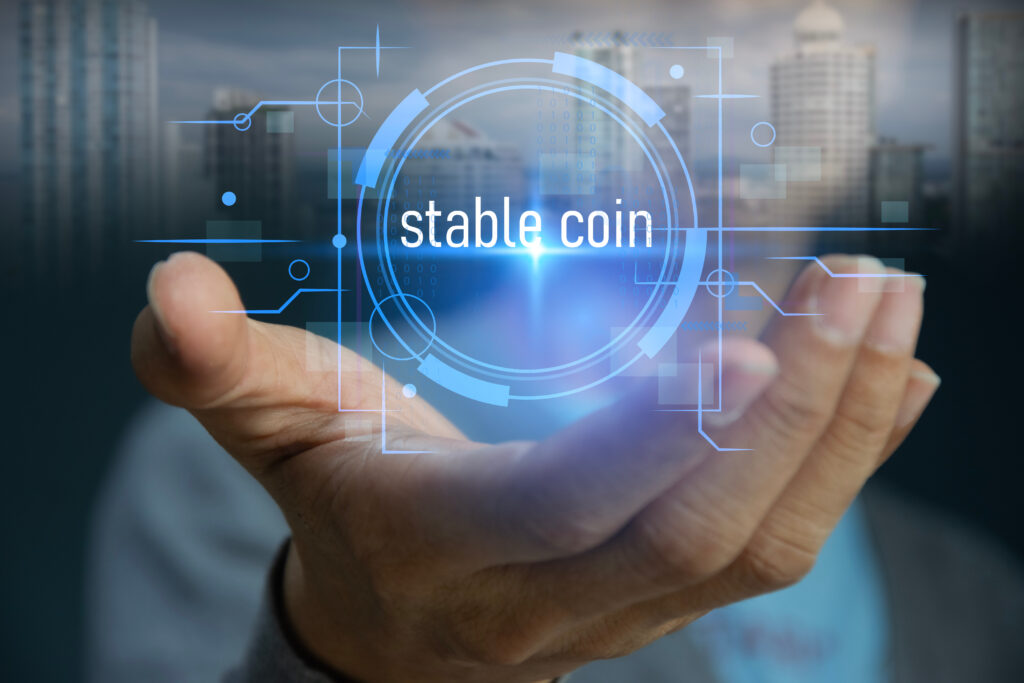
7 Stablecoins
7.1 “What is a Stablecoin? 6
- Stablecoins are a type of cryptocurrency whose value is pegged to another asset, such as a fiat currency or gold, to maintain a stable price.
- They strive to provide an alternative to the high volatility of popular cryptocurrencies, making them potentially more suitable for common transactions.
- Stablecoins can be utilized in various blockchain-based financial services and can even be used to pay for goods and services.
- Although the term “Stablecoin” is commonly used, there is no guarantee that the asset will maintain a stable value in relation to the value of the reference asset when traded on secondary markets or that the reserve of assets, if there is one, will be adequate to satisfy all redemptions.
Why are Stablecoins Important?
Stablecoins play a crucial role in the cryptocurrency ecosystem due to their stability. Cryptocurrencies like Bitcoin and Ether offer numerous benefits, such as not requiring trust in an intermediary institution to send payments anywhere and to anyone. However, their prices are unpredictable and can fluctuate wildly, making them challenging for everyday use. Stablecoins aim to tackle these price fluctuations by tying the value of cryptocurrencies to more stable assets, usually fiat currencies. This stability aims to maintain their value over time and encourages their adoption in regular transactions.
Types of Stablecoins
There are primarily three types of Stablecoins: fiat-collateralized, crypto-collateralized, and non-collateralized (algorithmic). Fiat-collateralized Stablecoins are pegged to a specific asset, such as a fiat currency. The entity behind the Stablecoin maintains a reserve of the asset or assets backing the Stablecoin, supporting the value of the digital currency. On the other hand, non-collateralized (algorithmic) Stablecoins use software algorithms to automatically adjust the supply of the Stablecoin based on demand, aiming to maintain a stable price”.
7.2 GENIUS Act 7
“The Guiding and Establishing National Innovation for U.S. Stablecoins Act (GENIUS Act), is a United States federal law that aims to create a comprehensive regulatory framework for stablecoins.[1] Stablecoins are a type of cryptocurrency that are backed by assets considered to be reliable such as a national currency or a commodity. Stablecoins are typically used to transfer funds between different cryptocurrency tokens.[2]
The act requires Stablecoins to be backed one-for-one by US dollars or other low-risk assets.[2] This establishes a stringent standard for purposes of determining reserves, doing audits, and providing transparency for buyers; prior to passage of the GENIUS Act, Stablecoins were not required to maintain a 1-to-1 backing with a low-risk asset. The act serves as a first step in establishing dual federal and state supervision and consumer protection.[3]”
For more details on Digital Assets and other crypto matters see our other articles including Capital Raising and Digital Tokens: Capital Raising and Digital Tokens: Using crypto to fund your business – Stace Hammond , Cryptocurrency and Tax in NZ – Stace Hammond; Demystifying Digital Assets – Stace Hammond and M&A – Legal Due Diligence and Crypto Assets – Stace Hammond.
Footnotes
- How tokenisation could democratise investing — Bitpanda Academy ↩︎
- crypto uptake in new zealand – Google Search ↩︎
- The Next Wave of Crypto Users in New Zealand – Easy Crypto ↩︎
- CFA® Program | Become a Chartered Financial Analyst® ↩︎
- Best Bitcoin Wallets Guide – MoneyHub NZ ↩︎
- https://www.coinbase.com/learn/crypto-basics/what-is-a-stablecoin ↩︎
- https://en.wikipedia.org/wiki/GENIUS_Act ↩︎
Subscribe
Get insights sent direct to your email.










